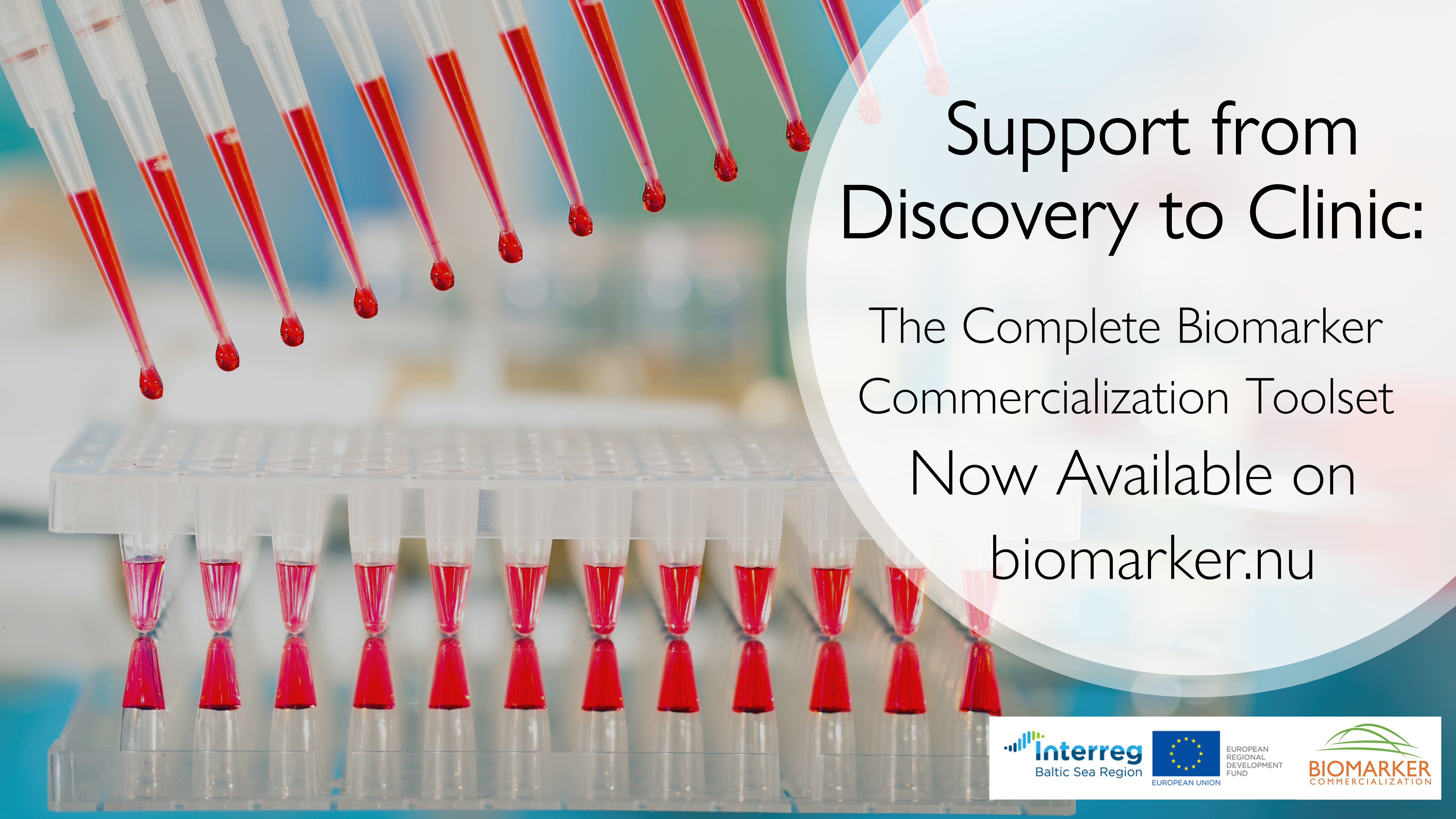
25 April 2022
Enabling the market uptake of biomarkers used in diagnostics and treatment.
Written by Barbara Simell, Turku Science Park Ltd
In the Interreg project BIC, partners from six countries around the Baltic Sea worked together to bring biomarkers into medical companies’ offers faster. In this way, BIC pushed forward personalised diagnostic and treatment for patients across the region.
What is a biomarker?
A biomarker is a biological molecule found in body fluids and tissues. It can provide data on the health status of a person so that appropriate clinical treatment could be applied. It measures, for instance, proteins produced by body cells, invaders, or antibodies which the immune system produces to fight off diseases.
The discovery of biomarkers is becoming increasingly important in research and industry. It gives rise to new areas of diagnostic and treatment, as it can drive researchers and enterprises into more innovative solutions.
Biomarkers have thus the potential to revolutionise the medical field and offer unprecedented possibilities for personalised medicine. Yet, the gap between biomarkers’ discoveries and the market uptake of these innovations is significant. Developing and introducing them into the market is time-consuming, difficult and expensive.
How Interreg funding helped commercialize biomarkers
The project BIC teamed up with hospitals, research and industry partners to improve the commercialisation process of biomarkers and make it more efficient.
Valerie Daussin Laurent, Project Leader of the BIC BRIDGE consortium
“The challenge this field is facing is to involve industry, such as pharmaceutical and diagnostic enterprises, SMEs and investors, much earlier in the development and commercialisation process of biomarkers, while research institutions need guidance to select the most relevant biomarker discoveries and conduct a development plan that meets early requirements from relevant industry partners.”
The partners developed a set of tools that support the different phases of the commercialisation process. The tools guided researchers and product developers on the technical, regulatory, and business aspects of product development and the commercialisation process.
Through these tools, the downstream pathway from research, validation, development to the market, co-created with industry, are defined. The industry got incentives to engage in biomarkers development at a much earlier phase. This paves the way for successful spinouts.
BIC Biomarker Commercialisation Tools – Support from Discovery to Market
All tools available on the biomarker.nu offer support from discovery to placing the innovation on the market. The main tool is the BIC Biomarker Commercialization Guide, which leads the user through the highly regulated and interdisciplinary biomarker development process. It highlights the technical, commercial and regulatory requirements of each phase to achieve the best possible outcome. The other tools are supportive “add-ons” that supplement the BIC Guide and offer deeper insight into certain aspects of the development process.
The Educational Toolbox is a compilation of material that deepens the understanding of the biomarker commercialisation process. It works as a user manual accompanying the BIC Guide. It gives a quick introduction to the BIC tool and provides additional information, for example, about diagnostic and statistical measures in the BIC Guide, start-ups, and different issues of In-Vitro Diagnostic Regulation (IVDR). The IVDR is the EU regulatory basis for making available on the market and putting into service in vitro diagnostic medical devices (used in diagnosis of disease or other conditions).
Pauli Ollikka, Project Coordinator of Development Services at University of Turku
“In my opinion, the Educational Toolbox is meant for all: for those who are wondering if the BIC tools are something that they can benefit from and for those who are already using the BIC tools but want further information.”
Other BIC biomarker commercialisation tools include the BIC Review Tool designed to improve communication and collaboration between Technology Transfer Offices (TTO) and Researchers and the project management platform to make the BIC Guide more interactive and easier to use.
Ewa Zdunczyk, Project Manager at Wroclaw Technology Park
“The now-static BIC Guide will be aligned with an open-source project-management platform, which will make the tool highly useful for biomarker development projects from invention to a finalised product and beyond.”
BIC In-Vitro Diagnostics Regulatory Tools
In-vitro diagnostics is becoming increasingly regulated at the EU level and on that note, the BIC consortium developed two separate, yet complementary tools. The BIC IVDR Guide is written from a scientific perspective. It explains what is required during the commercialization process, presenting the so-called TTO Commercialization Model. The IVDR Roadmap is more focused on the later stages of the development and is written from the manufacturer’s perspective. It is a map that provides guidance not only on what to do but also on how to do it.
Pawel Myszczyński, main author of the BIC Regulatory Tools & Project Specialist at Wroclaw Technology Park
“The manufacturer is faced with a set of regulations and standards around the IVDs. In the IVDR Roadmap, the regulatory activities are aligned with the standards that provide the solution to achieving regulatory compliance.”
Where do we go from here?
After the proejct BIC was over, the work was continued in the project BIC BRIDGE. The partners brought the commertialisation tools further. They introduced them to a wider group of companies and increased their usability, sustainability and impact.
Within four years of the BIC and BIC Bridge projects, the partners managed to develop a complete support toolbox for the successful translation of in-vitro diagnostic biomarker inventions into clinical applications. Using € 3.15 million from the European Union, the partners bought closer to patents for modern personalised diagnostics and treatment. However, the consortium partners are staying on their path to bring biomarker discoveries closer to the patients.
Valerie Daussin Laurent, Project Leader of the BIC BRIDGE consortium
“Since we started to have results to share, we have focused on building a larger network of people sharing our interests and knowledge. We want to build into a larger European initiative, where we are currently looking at the possibility to start a biomarker accelerator with access to funding. We are also looking at new challenges, where the digital part of diagnosing with biomarkers are clearly one of our interests. It is still very early, but if someone is interested in joining, do get in contact!”
More recent news
Bringing Communities Together for Sustainable Change
16 July 2025 Bringing Communities Together for Sustainable Change written by Anna ZaccaroOn 22 May 2025, we had the unique opportunity to explore...
How transnational cooperation is building Europe´s future with youth
Explore how transnational cooperation is transforming Europe, from addressing climate change to fostering local economic growth. This exhibition highlights the powerful impact of collaboration beyond borders in shaping a stronger, more united future.
CompositeCircle kicked off in Lappeenranta: setting the stage for circular innovation
The CompositeCircle project officially launched with a multi-day kick-off meeting in Lappeenranta, Finland, bringing together partners from across...




